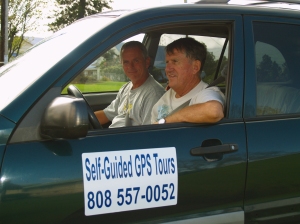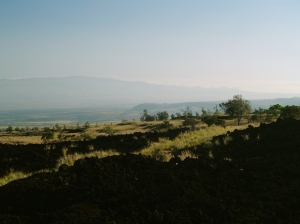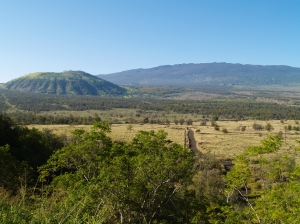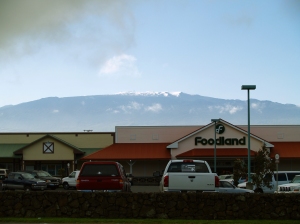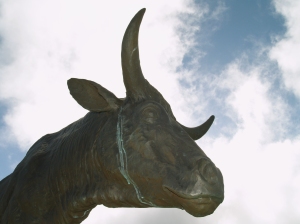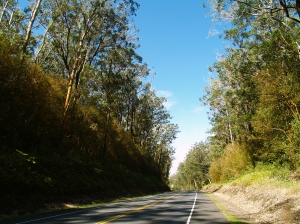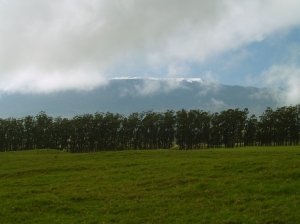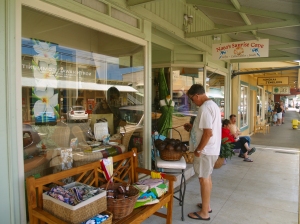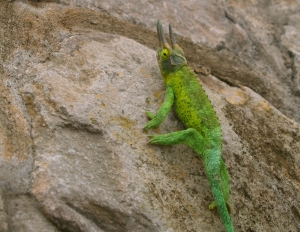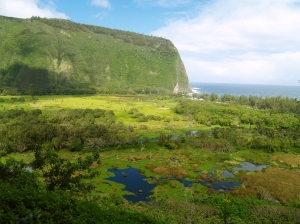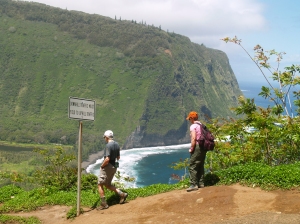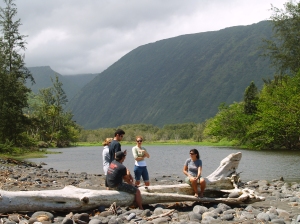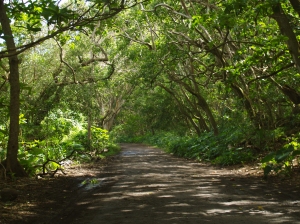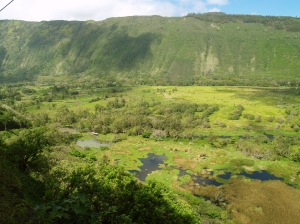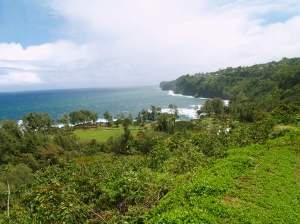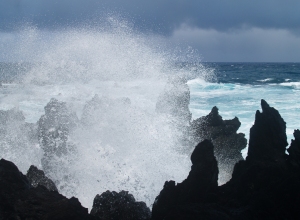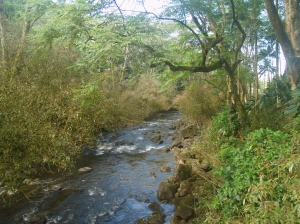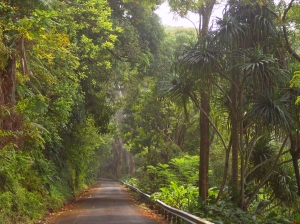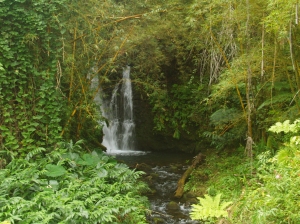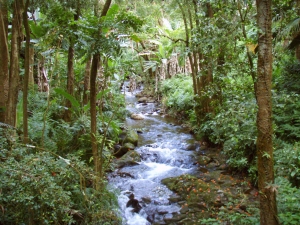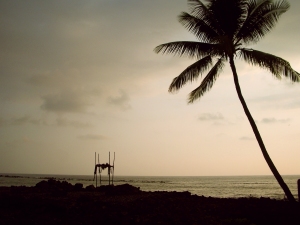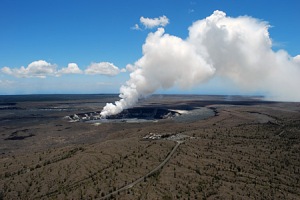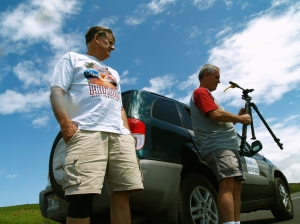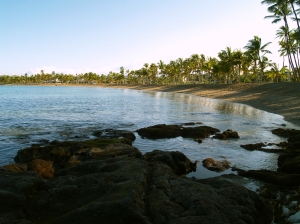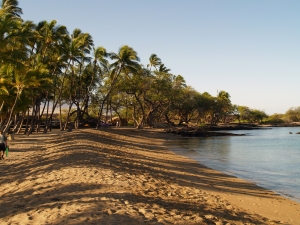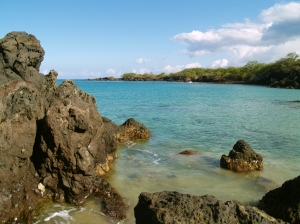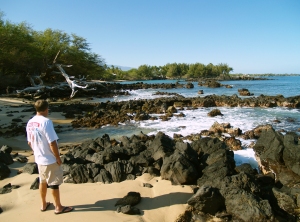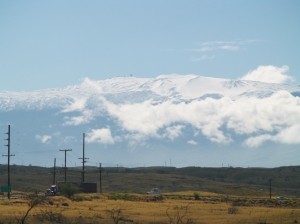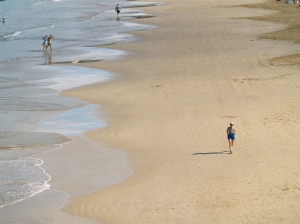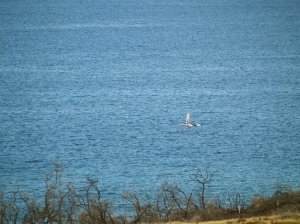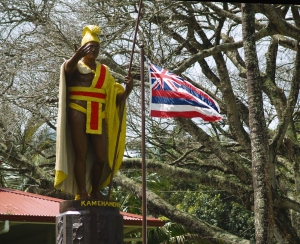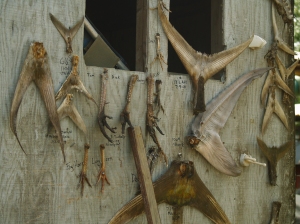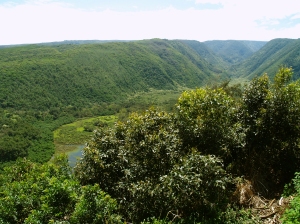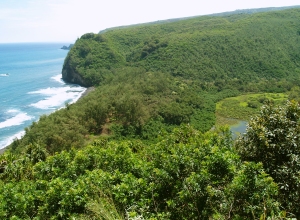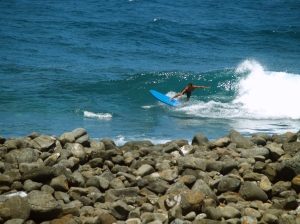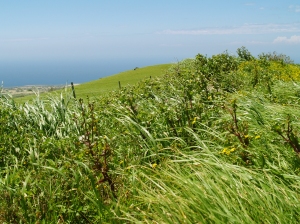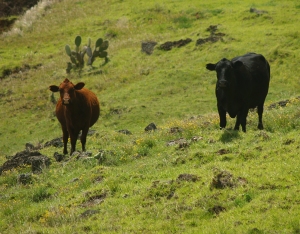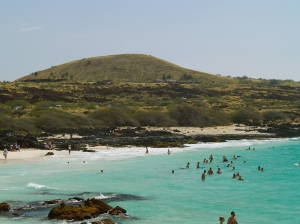Reprinted from here.
Why all the fuss about Mauna Loa this month?
 |
| The Mauna Loa 1984 summit eruption (USGS Photo). |
As noted in Volcano Watch a few weeks ago, this month marks the 25th anniversary of Mauna Loa's most recent eruption—a 22-day event that began on March 25, 1984. The article also mentioned a series of public programs that will be conducted in recognition of this anniversary.
Mauna Loa has been quiet for a quarter of a century, and considering the current lack of shallow seismicity that typically precedes volcanic activity by months or years, it is not expected to erupt any time soon. So, why all the fuss about this volcano?
A look at Mauna Loa's eruption frequency over the past 2,000 years shows that it has erupted, on average, once every 10 years. The volcano's short-term average is even more remarkable. Between 1843 and 1950, Mauna Loa erupted every 4 to 7 years. Based on this eruption history, you could easily conclude that the volcano is overdue for its next eruption.
During the 166 years that Mauna Loa's activity has been documented in writing, there's only one other time when the volcano remained quiet for 25 years—the period between its June 1, 1950, and July 5, 1975, eruptions. Mauna Loa's repose since 1984 will soon match that record.
A third of Hawai`i Island's current population was not yet born in 1984. There's also been an influx of malihini (newcomers) who moved to the island after Mauna Loa erupted. Given these two facts, a significant number of island residents may not be aware that Mauna Loa is an active volcano.
Even people who witnessed the 1984 eruption may not know—or remember—the full potential of volcanic hazards posed by Mauna Loa. A lot can be forgotten in 25 years.
The silver anniversary of Mauna Loa's last eruption affords an ideal occasion to remind us all of these concerns. Thus, the Hawaiian Volcano Observatory (HVO) is planning a series of public programs about past, present, and future activity on the world's largest volcano.
Two talks will be presented as After Dark in the Park programs in Hawai`i Volcanoes National Park. On Tuesday, March 17, HVO geologist Frank Trusdell, who has been mapping and studying Mauna Loa for nearly two decades, will speak about the volcano's eruptive history and current status. On Tuesday, March 24, Jack Lockwood, a former HVO volcanologist, will describe events leading up to, and during, Mauna Loa's 1984 eruption.
Both talks will be in the Kilauea Visitor Center auditorium, starting at 7:00 p.m. For more information, call (808) 985-6011 or go to the Park Web site (http://www.nps.gov/havo/planyourvisit/events_adip.htm).
HVO will also provide outreach programs in three communities around the island in collaboration with the University of Hawai`i at Hilo's Center for the Study of Active Volcanoes, Hawai`i County Civil Defense, and Hawai`i Volcanoes National Park.
These community programs will begin with a brief introductory presentation, followed by an informal "talk story" session, during which you can meet and interact with scientists, public safety officials, and park rangers. The programs are designed so that you can come and go at your leisure to talk story, but to hear the introductory presentation, you should arrive at the starting time.
Two programs are scheduled for Saturday, March 28—from 9:00 to 11:00 a.m. at UH-Hilo in UCB 100/127, and from 3:00 to 5:00 p.m. at St. Jude's Church in Ocean View. On Saturday, April 4, a program will be held at the Konawaena Elementary School cafeteria in Kealakekua from 10:00 a.m. to 12:00 p.m.
Displays set up for the talk story session will address frequently asked questions about Mauna Loa—such as, "Will it erupt soon?"—but you are welcome to bring any and all questions that you'd like to ask about the volcano. Children can engage in activities and demonstrations set up just for them.
Mauna Loa will erupt again—and chances are good that it will happen during your lifetime-so you are encouraged to attend one of the community programs. There's no better time than now to educate yourself about the massive volcano in your backyard.
Activity update
Kīlauea Volcano continues to be active. A vent in Halema`uma`u Crater is emitting elevated amounts of sulfur dioxide gas and producing small amounts of ash. Resulting high concentrations of sulfur dioxide in downwind air have closed the south part of Kīlauea caldera and produced occasional air quality alerts in more distant areas, such as Pahala and communities adjacent to Hawai`i Volcanoes National Park, during kona wind periods. Using a thermal camera, a small, puffing cone, varying in shape and size over the past week, has been visible about 100 yards below the vent rim.
Pu`u `Ō`ō also continues to produce significant amounts of sulfur dioxide. Trade winds tend to pool these emissions along the West Hawai`i coast, while Kona winds blow these emissions into communities to the north, such as Mountain View, Volcano, and Hilo.
A deflation/inflation (DI) event at Kilauea's summit early in the week caused no reported disruption in the supply of lava erupting from the Thanksgiving Eve Breakout (TEB) vent at the eastern base of Pu`u `O`o. Lava continues to enter the ocean at Waikupanaha and is rebuilding the delta there, which collapsed last Saturday (February 28). Thursday (March 5) marked the one-year anniversary of the start of the Waikupanaha ocean entry. Lava was also active on the coastal plain a few hundred yards from the ocean near Waha'ula in the National Park.
Be aware that active and recently inactive lava deltas can collapse at any time, potentially generating large explosions. This may be especially true during times of rapidly changing lava supply conditions. The Waikupanaha delta has collapsed several times in the past year, with at least four of the collapses resulting in rock blasts. These blasts have tossed television-sized rocks up onto the sea-cliff and have thrown fist-sized rocks more than 275 yards inland. It is unclear whether the February 28 collapse was accompanied by an explosion.
Do not approach the ocean entry or venture onto lava deltas. Even the intervening beaches are susceptible to large waves generated during delta collapse; avoid these beaches. In addition, steam plumes rising from ocean entries are highly acidic and laced with glass particles. Call Hawai`i County Civil Defense at 961-8093 for viewing hours.
Mauna Loa is not erupting. Three earthquakes were located beneath the summit this past week. Continuing extension between locations spanning the summit indicates slow inflation of the volcano, combined with slow eastward slippage of its east flank.
Four earthquakes beneath Hawai`i Island were reported felt within the past week. A magnitude-2.2 earthquake occurred at 12:06 p.m., H.s.t, on Thursday, February 26, 2009, and was located 12 km (8 miles) north of Kailua at a depth of 36 km (22 miles). A magnitude-2.2 earthquake occurred at 4:59 p.m. on Saturday, February 28, and was located 9 km (6 miles) west of Kailua at a depth of 11 km (7 miles). A magnitude-3.0 earthquake occurred at 9:20 a.m. on Wednesday, March 4, and was located 26 km (16 miles) southwest of Kailua at a depth of 38 km (24 miles). A magnitude-2.9 earthquake occurred at 8:25 a.m. on Thursday, March 5, and was located 3 km (2 miles) northeast of Pu`ulena Crater at very shallow depth.
Visit our Web site (http://hvo.wr.usgs.gov) for daily Kīlauea eruption updates, a summary of volcanic events over the past year, and nearly real-time Hawai`i earthquake information. Kīlauea daily update summaries are also available by phone at (808) 967-8862. Questions can be emailed to askHVO@usgs.gov. 
For more information on touring Hawaii in general and seeing the volcanoes of the Big Island in particular, please visit www.tourguidehawaii.com and www.lovingthebigisland.wordpress.com.
